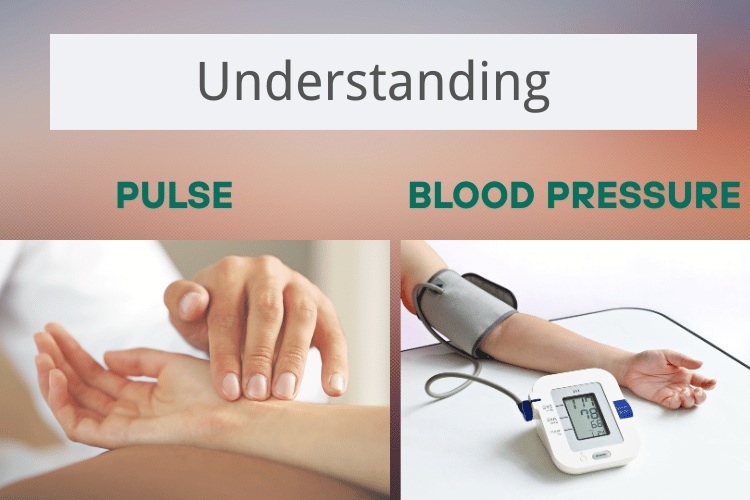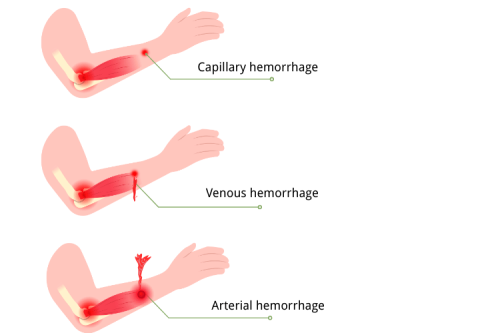
Peripheral pulses are a critical yet often overlooked aspect of cardiovascular assessment. While most people associate a pulse with the familiar throbbing in the wrist or neck, peripheral pulses extend far beyond these common sites, offering vital insights into circulatory health. If you’ve ever had a medical professional press two fingers against the top of your foot or behind your knee, you’ve experienced a peripheral pulse check firsthand.
While the average person may not give much thought to these subtle pulsations, healthcare providers rely on them to detect vascular abnormalities, assess blood flow, and diagnose conditions ranging from arterial blockages to shock. The presence, absence, or weakening of peripheral pulses can be the difference between early intervention and a life-threatening complication.
Let’s explore what peripheral pulses are, why they matter, and how they are assessed in clinical practice, focusing on key pulse points, their significance, and the conditions that can alter their characteristics.
Understanding Pulse and Blood Pressure
Pulse and blood pressure are two critical indicators of cardiovascular health, providing valuable insights into the heart's and circulatory system's functioning. While they are distinct measurements, they are closely interconnected and play a vital role in diagnosing and managing various health conditions. This overview explores the definitions, significance, and relationship between pulse and blood pressure.

Understanding Pulse and Blood Pressure
What is Pulse?
Pulse refers to the rhythmic throbbing of arteries caused by the contraction of the heart as it pumps blood throughout the body. It is typically measured at points where arteries are close to the skin, such as the wrist or neck. Key aspects of pulse include:
- Rate: The number of beats per minute (bpm), with a normal resting rate ranging from 60 to 100 bpm for adults.
- Rhythm: The regularity of the beats, which can indicate normal or abnormal heart function.
- Strength: The force of the pulse, which may vary depending on blood flow and arterial health.
Monitoring pulse can help detect irregularities such as arrhythmias or tachycardia, which may require medical attention.
Importance of Blood Pressure Measurement
Blood pressure measures the force of blood against the walls of arteries as the heart pumps. It is expressed in two numbers:
- Systolic Pressure: The pressure during heartbeats.
- Diastolic Pressure: The pressure between beats when the heart rests.
Maintaining normal blood pressure (around 120/80 mmHg) is crucial, as high or low blood pressure can lead to serious health issues, including heart disease, stroke, or organ damage. Regular monitoring helps in early detection and management of these conditions.
Relationship Between Pulse and Blood Pressure
Although pulse and blood pressure are separate metrics, they are interrelated. For instance:
- High Blood Pressure: Can lead to a stronger or more forceful pulse.
- Low Blood Pressure: May result in a weak or thready pulse.
- Heart Rate Influence: A rapid pulse does not always indicate high blood pressure, as factors like stress or exercise can temporarily elevate the pulse without affecting blood pressure.
Understanding the relationship between these two measurements is essential for comprehensive cardiovascular health assessment and effective medical intervention.
Assessing Peripheral Pulses
Peripheral pulses are an essential component of physical examinations, providing critical information about blood flow and cardiovascular health. Proper assessment of these pulses helps identify circulatory issues, arterial blockages, or other underlying conditions. This overview explains the concept of peripheral pulses, highlights common pulse points, and outlines techniques for accurate assessment.
Defining Peripheral Pulses
Peripheral pulses are the palpable beats of blood flow in arteries located away from the heart, such as in the arms, legs, and neck. These pulses reflect the rhythmic contraction of the heart and the efficiency of blood circulation to the extremities. Key characteristics of peripheral pulses include:
- Rate: The number of beats per minute.
- Rhythm: The regularity of the beats, which can indicate normal or abnormal heart function.
- Amplitude: The strength of the pulse, which may vary depending on arterial health and blood flow.
Peripheral pulses are crucial for evaluating the adequacy of circulation and detecting conditions like peripheral artery disease (PAD).
Common Pulse Points
Peripheral pulses can be assessed at specific anatomical locations where arteries are close to the skin and overlying bone. Common pulse points include:
- Radial Pulse: Located on the wrist, near the base of the thumb.
- Brachial Pulse: Found in the inner arm, above the elbow.
- Carotid Pulse: Located on either side of the neck, near the windpipe.
- Femoral Pulse: Found in the groin area.
- Popliteal Pulse: Located behind the knee.
- Dorsalis Pedis Pulse: Found on the top of the foot.
- Posterior Tibial Pulse: Located behind the ankle bone.
Techniques to Assess Peripheral Pulses Accurately
Accurate assessment of peripheral pulses requires proper technique and attention to detail. Key steps include:
- Positioning: Ensure the patient is relaxed and in a comfortable position to avoid tension in the muscles.
- Palpation: Use the pads of your index and middle fingers to gently press over the pulse point. Avoid using the thumb, as it has its own pulse.
- Observation: Assess the rate, rhythm, and strength of the pulse, noting any irregularities or asymmetry between sides.
- Documentation: Record findings accurately, including any abnormalities, to guide further evaluation or treatment.
By mastering these techniques, healthcare providers can effectively assess peripheral pulses and gain valuable insights into a patient’s circulatory health.
Measuring Systolic Blood Pressure
Systolic blood pressure is a key indicator of cardiovascular health, reflecting the force exerted on artery walls during heart contractions. Accurate measurement of systolic pressure is essential for diagnosing and managing conditions like hypertension and heart disease. This overview explores the distinction between systolic and diastolic pressure, methods for measuring blood pressure, and factors that can influence readings.
Understanding Systolic vs. Diastolic Pressure
Blood pressure is expressed as two numbers: systolic over diastolic.
- Systolic Pressure: The higher number, representing the pressure in arteries when the heart contracts and pumps blood.
- Diastolic Pressure: The lower number, indicating the pressure in arteries when the heart rests between beats.
Systolic pressure is particularly significant as it reflects the workload of the heart and the condition of the arteries. Elevated systolic pressure (above 120 mmHg) is a primary risk factor for cardiovascular diseases.
Methods for Measuring Blood Pressure
Blood pressure can be measured using various techniques, each requiring precision for accurate results:
- Manual Measurement: Involves a sphygmomanometer and stethoscope. The cuff is inflated to restrict blood flow, and the systolic pressure is noted when the first Korotkoff sound is heard.
- Digital Monitors: Automated devices that provide quick and user-friendly readings, often used in home settings.
- Ambulatory Monitoring: A portable device worn over 24 hours to track blood pressure changes throughout the day.
- Invasive Methods: Used in critical care, involving direct measurement through arterial catheterization.
Factors Affecting Blood Pressure Readings
Several factors can influence the accuracy of blood pressure measurements:
- Positioning: Incorrect arm or body positioning can lead to inaccurate readings.
- Cuff Size: Using a cuff that is too small or too large can distort results.
- Activity Level: Physical exertion or stress prior to measurement can temporarily elevate blood pressure.
- Medications: Certain drugs can affect blood pressure levels.
- Time of Day: Blood pressure naturally fluctuates, often being lower in the morning and higher in the afternoon.
By understanding these elements, healthcare providers and individuals can ensure accurate systolic blood pressure measurements, aiding in effective health management.
Clinical Significance of Assessing Pulse and Blood Pressure
Pulse and blood pressure are fundamental indicators of cardiovascular health, offering valuable insights into the body’s circulatory and cardiac functions. Regular assessment of these parameters is crucial for identifying potential health issues, monitoring ongoing conditions, and guiding treatment decisions. This overview examines how pulse and blood pressure assessments reveal vascular health, monitor cardiac function, and highlight the implications of abnormal readings.
Identifying Vascular Health Through Pulsation
The characteristics of a person’s pulse provide critical information about vascular health. Key aspects include:
- Pulse Rate: A normal resting rate (60-100 bpm) indicates efficient blood flow, while deviations may signal arrhythmias or other conditions.
- Pulse Rhythm: Irregular rhythms can point to atrial fibrillation or other cardiac abnormalities.
- Pulse Strength: A weak or thready pulse may suggest poor circulation, while a bounding pulse could indicate high blood pressure or hyperthyroidism.
By evaluating these factors, healthcare providers can detect early signs of vascular diseases, such as peripheral artery disease or arterial blockages.
Monitoring Cardiac Function and Health
Blood pressure and pulse assessments are essential for monitoring the heart’s performance and overall health. Systolic and diastolic pressures reflect the heart’s ability to pump blood effectively and the resistance in the arteries. Regular monitoring helps:
- Track Hypertension: Elevated blood pressure increases the risk of heart attack, stroke, and kidney damage.
- Evaluate Treatment Efficacy: Blood pressure readings guide the effectiveness of medications or lifestyle changes.
- Detect Heart Failure: Abnormal pulse and pressure readings may indicate reduced cardiac output or fluid overload.
Implications of Abnormal Readings
Abnormal pulse or blood pressure readings can have significant clinical implications:
- High Blood Pressure (Hypertension): Increases the risk of cardiovascular diseases, stroke, and organ damage.
- Low Blood Pressure (Hypotension): May lead to dizziness, fainting, or shock in severe cases.
- Irregular Pulse: Can signal arrhythmias, which may require immediate medical attention.
- Pulse-Pressure Discrepancies: A wide or narrow pulse pressure can indicate conditions like aortic valve disorders or heart failure.
Understanding the clinical significance of these assessments enables early detection, effective management, and improved patient outcomes in cardiovascular health.
Frequently Asked Questions
What are peripheral pulses and why are they important in healthcare?
Peripheral pulses refer to the palpable pulses found in various arteries throughout the body, particularly in the extremities. They are important in healthcare as they provide crucial information about blood flow, cardiovascular health, and can help healthcare providers assess a patient's overall circulatory system performance.
How do you perform a pulse examination on the dorsalis pedis pulse?
To perform a pulse examination on the dorsalis pedis pulse, locate the dorsalis pedis artery, which runs along the top of the foot. Using your index and middle fingers, gently palpate the area between the first and second metatarsal bones. A strong and regular pulse indicates good blood flow to the foot.
What is the significance of the posterior tibial pulse in assessing health?
The posterior tibial pulse is located behind the medial malleolus of the ankle. It is significant in assessing health as it helps evaluate circulation to the lower leg and foot. A diminished or absent posterior tibial pulse could indicate peripheral artery disease or other circulatory issues.
How do healthcare professionals evaluate the brachial artery pulse?
Healthcare professionals evaluate the brachial artery pulse by palpating the artery located in the antecubital fossa, which is the crease of the elbow. This pulse is commonly assessed in infants and during emergency situations to check for circulation and heart rate.
What are the normal ranges for peripheral pulses in a clinical examination?
The normal range for peripheral pulses varies but generally falls between 60 to 100 beats per minute in adults. During a clinical examination, healthcare providers assess the rhythm, strength, and symmetry of the pulses to determine any abnormalities.
What role does the radial pulse play in assessing heart health?
The radial pulse, located on the wrist, is a fundamental skill in assessing heart health. By measuring the radial pulse, healthcare professionals can determine heart rate, rhythm, and overall cardiovascular function, providing insights into the patient's heart health.
How can assessing peripheral pulses help in diagnosing heart disease?
Assessing peripheral pulses can help in diagnosing heart disease by revealing signs of poor circulation and potential artery blockages. Healthcare providers can identify risk factors and make informed decisions about further tests or interventions based on the characteristics of the pulses.
What are the characteristics that can indicate peripheral artery disease during palpation?
During palpation, characteristics such as weak or absent pulses, coolness of the extremities, and skin changes can indicate peripheral artery disease. These signs suggest insufficient blood flow, prompting further evaluation and management by healthcare professionals.
The Bottom Line
Peripheral pulses serve as a window into vascular health, offering critical diagnostic clues that central pulses alone cannot provide. Whether in emergency medicine, routine check-ups, or post-operative care, mastering pulse assessment ensures timely detection of circulatory compromise.
For healthcare professionals, recognizing subtle changes in peripheral pulses can mean the difference between catching a silent clot before it becomes fatal or missing a critical warning sign. For patients, understanding their significance reinforces the importance of regular vascular screenings—especially for those at risk of diabetes, PAD, or heart disease.
Choose the right assessment techniques, and you’ll unlock a deeper understanding of circulatory function—one pulse at a time.








 Login with Google
Login with Google Login with Facebook
Login with Facebook